Material properties and electrical stimulation regimens of polycaprolactone fumarate-polypyrrole scaffolds as potential conductive nerve conduits
- PMID: 20965280
- PMCID: PMC3031729
- DOI: 10.1016/j.actbio.2010.10.013
Material properties and electrical stimulation regimens of polycaprolactone fumarate-polypyrrole scaffolds as potential conductive nerve conduits
Abstract
The mechanical and electrical properties of polycaprolactone fumarate-polypyrrole (PCLF-PPy) scaffolds were studied under physiological conditions to evaluate their ability to maintain the material properties necessary for application as conductive nerve conduits. PC12 cells cultured on PCLF-PPy scaffolds were stimulated with regimens of 10 μA of either a constant or a 20 Hz frequency current passed through the scaffolds for 1h per day. PC12 cellular morphologies were analyzed by fluorescence microscopy after 48 h. PCLF-PPy scaffolds exhibited excellent mechanical properties at 37 °C which would allow suturing and flexibility. The surface resistivity of the scaffolds was 2 kΩ and the scaffolds were electrically stable during the application of electrical stimulation (ES). In vitro studies showed significant increases in the percentage of neurite bearing cells, number of neurites per cell and neurite length in the presence of ES compared with no ES. Additionally, extending neurites were observed to align in the direction of the applied current. This study shows that electrically conductive PCLF-PPy scaffolds possess the material properties necessary for application as nerve conduits. Additionally, the capability to significantly enhance and direct neurite extension by passing an electrical current through PCLF-PPy scaffolds renders them even more promising as future therapeutic treatments for severe nerve injuries.
Copyright © 2010 Acta Materialia Inc. Published by Elsevier Ltd. All rights reserved.
Figures


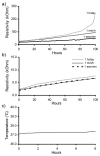
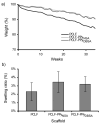

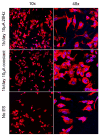

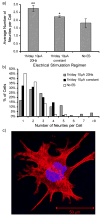

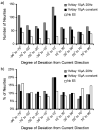
References
-
- Isaacs J. Treatment of acute peripheral nerve injuries: current concepts. J Hand Surg Am. 2010;35:491–7. - PubMed
-
- Evans GR. Challenges to nerve regeneration. Semin Surg Oncol. 2000;19:312–8. - PubMed
-
- Yucel D, Kose GT, Hasirci V. Polyester based nerve guidance conduit design. Biomaterials. 31:1596–603. - PubMed
-
- Chiono V, Vozzi G, Vozzi F, Salvadori C, Dini F, Carlucci F, et al. Melt-extruded guides for peripheral nerve regeneration. Part I: Poly(epsilon-caprolactone) Biomed Microdevices. 2009 May; Epub. - PubMed
Publication types
MeSH terms
Substances
Grants and funding
LinkOut - more resources
Full Text Sources
Other Literature Sources

